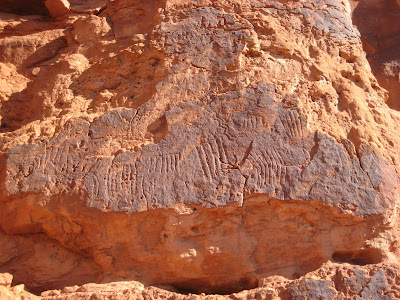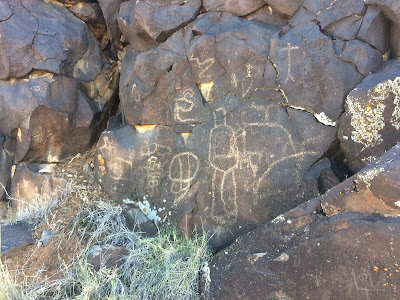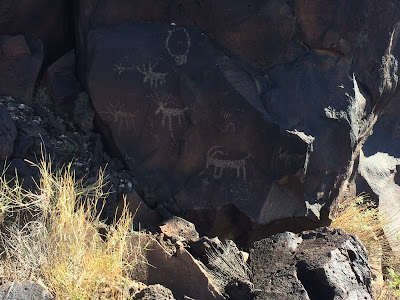Wednesday, November 30, 2016
Saturday, November 26, 2016
“You look like you’ve been on a month-long bender. Have you?”
“No, Ken, I have not. I’ve just had a long week.”
Walked the streets of a city bathed in blood and stood amid a hundred thousand corpses. Negotiated a three-way peace treaty among opposing factions of a warring alien species who’d previously held me captive. Bullied the Metigen leadership into doing my bidding. Found out we’re not the real humans, and the real humans are currently enslaving the real universe. Oh, and I think I’m addicted to my ship. How was your week?
“Nothing a shower and some food won’t fix.”

Utah Rock Puzzle
Photographer: Roger Hopkins
Summary Author: Roger Hopkins
This is a view from the southern end of Cedar Mesa near Muley Point in southeastern Utah. At the bottom of the cliff 1,000 ft (300 m) below you can see the Johns Canyon Road following the ancient floodplain of the San Juan River. The present day river is well entrenched another 1,000 ft lower in a series of deep meanders called the Goosenecks. The view continues to the south for 20 mi (32 km) past Davis Mesa to where the monoliths of Monument Valley punctuate the horizon.
Views from other angles are available Here
Summary Author: Roger Hopkins
This is a view from the southern end of Cedar Mesa near Muley Point in southeastern Utah. At the bottom of the cliff 1,000 ft (300 m) below you can see the Johns Canyon Road following the ancient floodplain of the San Juan River. The present day river is well entrenched another 1,000 ft lower in a series of deep meanders called the Goosenecks. The view continues to the south for 20 mi (32 km) past Davis Mesa to where the monoliths of Monument Valley punctuate the horizon.
In the immediate foreground is a puzzle: How did the light-colored boulder get on top of the huge dark fallen block? If you can help solve this puzzle please follow the Discuss on Facebook link below and post your ideas. I can only guess how this happened.
Here are a few clues that may be of use: Both the boulder and the fallen block are Cedar Mesa Sandstone, part of the Cutler Formation of rock, formed in the early Permian Period (290 million years ago), that forms the upper half of the mesa. The lighter white color may be caused by bleaching of surface rock by rain and or sunlight over the ages. The dark black color is a superficial coating of desert varnish formed of clay, silica, manganese, and iron particles carried by the wind. In this area, most of the desert varnish forms very slowly on the exposed vertical surfaces. There are numerous vertical joints (fractures in the rock) that can explain the flat surfaces of the huge blocks that have broken away from the cliff. Note the brownish red color is caused by oxidation of iron content in the rock
Views from other angles are available Here
that show the overall context and may help you solve the puzzle. Photo taken on October 13, 2016.
EPOD
Friday, November 25, 2016
Wednesday, November 23, 2016
Tuesday, November 22, 2016
Earliest Known Clay Figurines in the Southwest May Be Fertility Symbols, Study Says
Curious clay figurines that have been found in southern Arizona appear to be fertility symbols used by desert farmers as much as 3,000 years ago, according to new research.Only a few of the figures have been found, primarily at the sites of two pre-contact villages excavated near Tucson.
The long, bulbous objects are likely the earliest clay figures yet found in the American Southwest. And since the first of them was reported in 2005, experts have speculated about what they were, with theories ranging from healing charms to children’s toys.
Western Digs
Monday, November 21, 2016
Subscribe to:
Comments (Atom)

















































